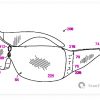If this isn’t your first time to this blog, you’ll know that we’re forever touting the benefits of converting your images from raster to vector. And for good reason—you simply can’t get the full potential from your technical drawings while they’re…


If this isn’t your first time to this blog, you’ll know that we’re forever touting the benefits of converting your images from raster to vector. And for good reason—you simply can’t get the full potential from your technical drawings while they’re…

Getting computers to recognize text within images can be a tricky business. Machines find it very difficult to separate text from other objects because they, of course, do not interpret letters and numbers in the same way as humans all elements…

PDFs are one of the most popular file formats around, no matter what industry you’re working in. They’re the perfect way to share and exchange all types of documents. A key reason for this is that you can open them using…

The technology that enables computers to recognize text–Optical Character Recognition—is constantly evolving, expanding the parameters of what we can convert. It now boasts the ability to convert even handwritten text. This is an impressive feat—human handwriting is, of course, the most…

A key benefit of vector images over their raster counterparts is their ability to include editable text. The text in a raster image is nothing more than a collection of pixels. As such, it’s indistinguishable on a technical level from the remainder…

Converting your designs from raster to vector has many benefits. The quality of the work isn’t affected when re-scaling or re-sizing; it can be edited using CAD software; files tend to be smaller and thus easy to share—the list goes on….

‘Optical Character Recognition’ – or OCR – is a process which allows us to convert text contained in images into editable documents. OCR can extract text from a scanned document or an image of a document; really, any image with text in it. This technology is…